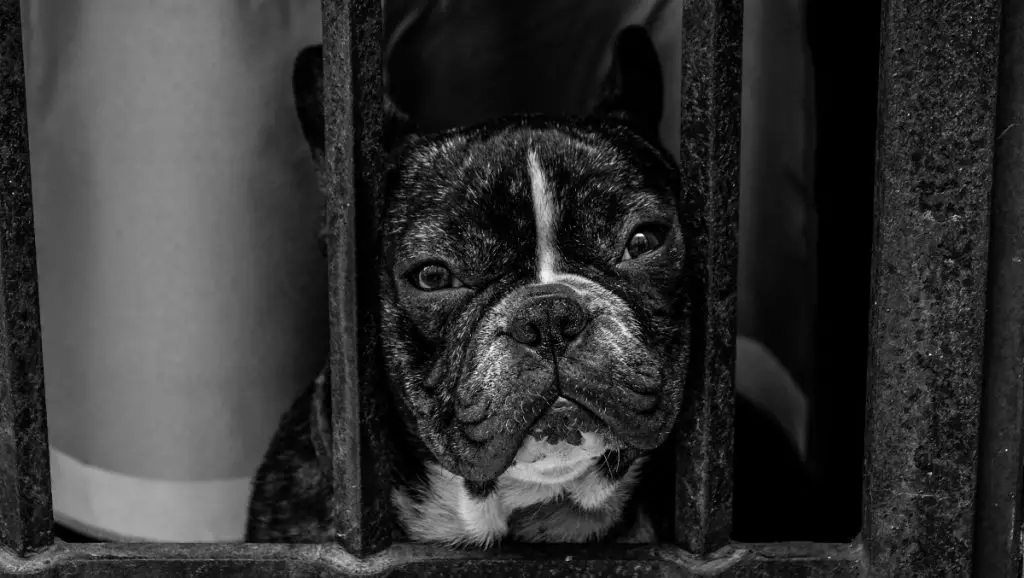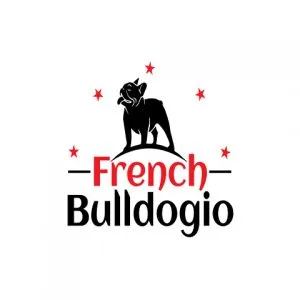
While French Bulldogs have “Bulldog” in their name, this adorable little breed is completely different from their stocky and fierce ancestors.
This breed makes a perfect companion today, but as you likely already know, most dogs were bred with a purpose in mind. So, what were French Bulldogs bred for?
Many dog breeds were bred for hunting or working, and have since evolved to enjoy a quiet life at home. French Bulldogs, on the other hand, were bred purely as a lap dog.
They were bred as a toy version of English Bulldogs. In the 19th century England, lace workers enjoyed the quiet company of a French Bulldog lap dog. When many lace workers decided to immigrate to France, they brought their loving dogs along for the journey.
Today, French Bulldogs are still an incredibly popular choice. This toy breed is well fit for apartment life, and while they are just as cute as English Bulldogs, they are less stubborn by nature. Read on as we delve into more of the history behind this wonderful breed.

French Bulldog Ancestry: The Old English Bulldog
The Old English Bulldog was bred at the beginning of the 1700s, under the reign of England’s Queen Ann. A cruel sport known as “bull-baiting” was extremely popular at the time.
A dog was forced to go up against a bull. The dog’s job was to move the bull before it was attacked by the creature’s horns. The bull was chained to a pole and given a 30-foot diameter to roam.
Before the sport began, someone put large amounts of pepper into the bull’s nose to make it as mad as possible before the poor dog was released into the stadium.
The dog would try to bite the bull hard enough to win the fight before the bull could get hold of it. Unfortunately, most dogs didn’t stand much of a chance.
Many people were eager to find a breed of dog that could incapacitate a bull and win the “game.” The Old English Bulldog was bred for this exact purpose.
This breed looked far different from the English Bulldog we know today. It had long legs and could run very swiftly. Its underbite was also less pronounced, and its athletic build made it far less lazy than most Bulldogs are nowadays.
Still, our English Bulldogs today have retained the stubbornness and tenacity of their Old English Bulldog Ancestors. This breed made for excellent competition against bulls in the ring, although these victories did nothing to change the inherent cruelty of the sport.
Thankfully, the sport was outlawed by the British Parliament in 1835 with the passage of a new act known as the Cruelty to Animals Act. Still, people were eager to get their hands on a new exciting “sport,” and soon dogfighting was invented to take the place of bull-baiting.
The Creation of the Modern Bulldog
After bull-baiting was outlawed, it remained popular for a few years before eventually winding down. The equally barbaric sport of dogfighting took its place almost immediately.
Breeders found a new challenge and attempted to create a dog that could win against other dogs rather than bulls. The Old English Bulldog was crossed with a terrier breed that is extinct today.
This English Bulldog’s shorter legs kept it lower to the ground, making it hard to unbalance.
Its emphasized underbite and malicious temperament made it a fearsome adversary in dogfighting rings.
Mercifully, the British Parliament’s Cruelty to Animals Act was reinforced to stamp out the barbaric sport of dog fighting, as well.
For a time, the English Bulldog seemed to have no purpose. What was this breed meant for if not fighting bulls or other dogs? For some time, it seemed as though the English Bulldog had gone out of fashion.
The Creation of the French Bulldog
For a time, it seemed as though the English Bulldog had no purpose left in this world. Until that is, the famous dog breeder known as Bill George decided it had another value.
Bill George saw the potential of the English Bulldog as a pet, and around 1850, the English Bulldog was crossed with other dog breeds, including terriers. Eventually, the smaller Toy Bulldog was created, and while this breed is extinct today, it paved the way for our lovable French Bulldogs.
The Toy Bulldog was excellent at capturing rats and became immensely popular. By the late 1800s, lace artisans in Nottingham, England, adored this breed as lap dogs. Still, this Toy Bulldog was a far cry from the French Bulldogs we know today. So how did that breed come to be?
The late 19th century brought the Industrial Revolution. With it came automation, and the lace workers of Nottingham found that their jobs were replaced by far more efficient machines.
With nothing left for them in England, these lace artisans decided it was time to find a new life for themselves. Many of these lace workers moved to Normandy, France. Of course, they couldn’t imagine parting with their beloved dogs, so their Toy Bulldogs sailed across the sea to join them in their new home.
Upon arriving in France, this Toy Bulldog became an instant hit. Parisian aristocrats had to get their hands on this miniature breed, and they wanted to make it even smaller and more adorable than it already was.
Rather than breeding a dog that was meant for fighting, they wanted a companion who could also be useful in hunting rats and other pests in the home.
The Toy Bulldog was bred with terriers over generations to make it smaller. This terrier influence also contributed to the upright and batlike ears that are so distinctive in French Bulldogs today.
Over time, breeders were able to procure a dog that looked quite different from its ancestor, the Old English Bulldog. The long, athletic legs and exaggerated underbite were swapped for a flattened face and short legs.
In France, this newly developed breed was initially called the Bouledogue Francais, which was eventually translated into its current name; the French Bulldog, also known lovingly as a Frenchie.
A slew of famous creatives and politicians were known for their pet Frenchies, but this breed wasn’t just for the rich and powerful. Every day civilians such as carpenters, grocers, and butchers fell in love with the French Bulldogs, as well.
The French Bulldog Today
Since its birth in the late 19th century, the French Bulldog has changed very little. While it is not used as frequently to hunt rats and other pests, it still makes an excellent lap dog.
Hints of its ancestry can still be found in its somewhat stubborn nature, but this relaxed and somewhat lazy breed is still very different from the Old English Bulldog.
Today, the French Bulldog is still being crossed with other dog breeds, including Chihuahuas, Poodles, Beagles, and many other breeds. Many of these crossbreeds are created to elongate the French Bulldog’s characteristically flat face.
While distinctively adorable, the flat face of a Frenchie actually results in many health problems, and responsible breeders from around the world are doing their best to retain the distinctive look of a Frenchie while also attempting to create a breed that is healthier overall.
While it may not be apparent at first glance, the French Bulldog has a fascinating history that can be traced back centuries ago.
Many different breeders all contributed to creating this adorable toy breed that we all know and love today. The next time you look at your Frenchie, you might even catch a glimpse of its exciting ancestry.
Related Questions:
What are American Bulldogs?
French Bulldogs, English Bulldogs, and now American Bulldogs? There are a lot of different Bulldog breeds to keep track of! The American Bulldog is a descendant of English Bulldogs from, you guessed it, England! It came to America from English and Welsh immigrants looking for work in the 18th century.
This breed was excellent for farmers in the south, as it hunted dangerous hogs nearby. After a couple of centuries of breeding, the American Bulldog looks quite different from its English ancestor. It has longer legs and a less exaggerated underbite. Unlike the toy French Bulldog, the American Bulldog is considered a working dog.
What is the Average French Bulldog’s Temperament?
Other than a bit of a stubborn streak, the French Bulldog has retained very little of the mean spirit of its English ancestry. They are gentle, relaxed, and easygoing pets.
Their entire purpose as a breed has been as a lap dog, and as such, they love to lay around and spend time with their owners. They make excellent companions for children, as they are patient by nature. They have been known as one of the best family dog breeds for years.
Are French and English Bulldogs Separate Breeds?
French and English Bulldogs are very different in size and jaw structure. As such, these dogs are considered to be separate breeds. While they share a lot of the same ancestry, they have their own distinct characteristics, and they have been recognized as separate breeds for almost a century.
Other Resources

